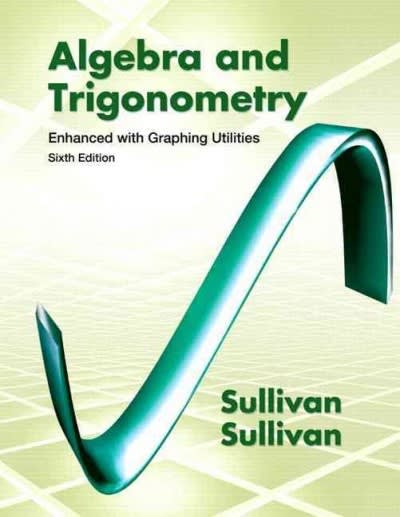Question
Q1 and Q3 are quite straightforward. You only need to state the null and alternative hypothesis.No calculations involved University X has 20,000 students, of which
Q1 and Q3 are quite straightforward. You only need to state the null and alternative hypothesis.No calculations involved
University X has 20,000 students, of which 9000 are men, and 11,000 are women. You collected independent simple random samples from men and women, and recorded how much money each respondent spent on cellular telephone service in a month.
You got the following results:
- Men: Sample size = 100, sample mean = $40, sample standard deviation = $20
- Women: Sample size = 100, sample mean = $55, sample standard deviation = $15
Please answer the following three questions.
Q1: You want to test the null hypothesis that the total expenditure on cellular telephone service by all the 11000 women, combined, in a month does not exceed $500,000. Please write down the correct expression of the corresponding null hypothesis. Discuss the potential Type I and Type II error.
Q2: At a 99% level of confidence, test the above null hypothesis, that the total expenditure on cellular telephone service by all the 11000 women, combined, in a month does not exceed $500,000. Note: the corresponding Z statistic for 99% level of confidence is 2.33. (Show details of work)
Q3: You want to test the null hypothesis that on the average, the monthly expenditure on cellular telephone service by a woman does not exceed the monthly expenditure on cellular telephone service by a man by more than $10. Please write down the correct expression of the corresponding null hypothesis (You do not need to test this one).
Step by Step Solution
There are 3 Steps involved in it
Step: 1

Get Instant Access to Expert-Tailored Solutions
See step-by-step solutions with expert insights and AI powered tools for academic success
Step: 2

Step: 3

Ace Your Homework with AI
Get the answers you need in no time with our AI-driven, step-by-step assistance
Get Started


